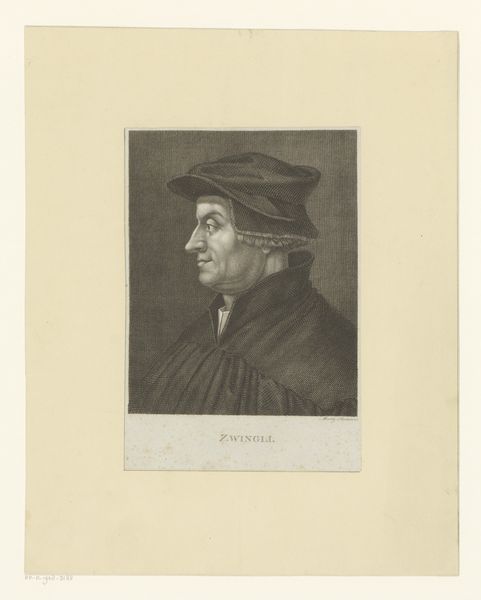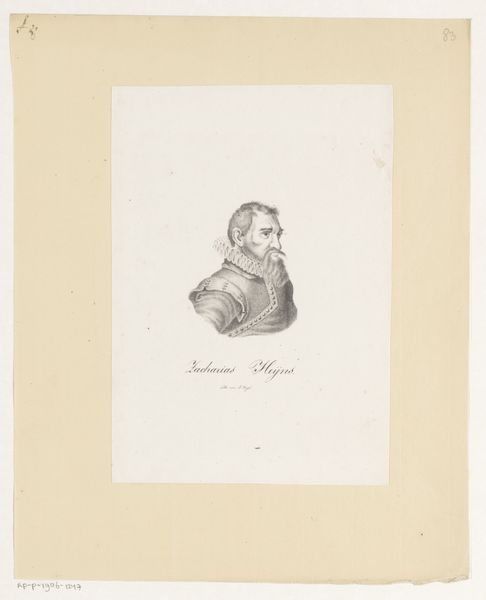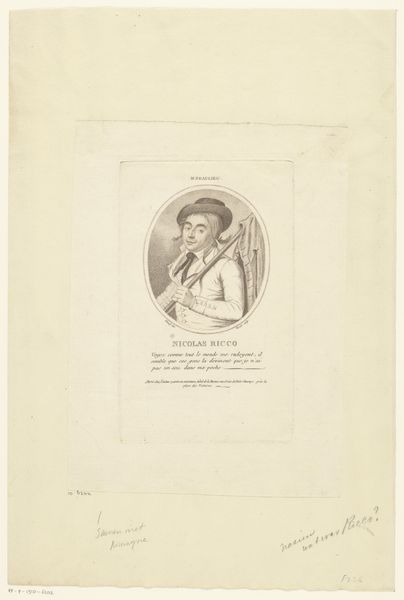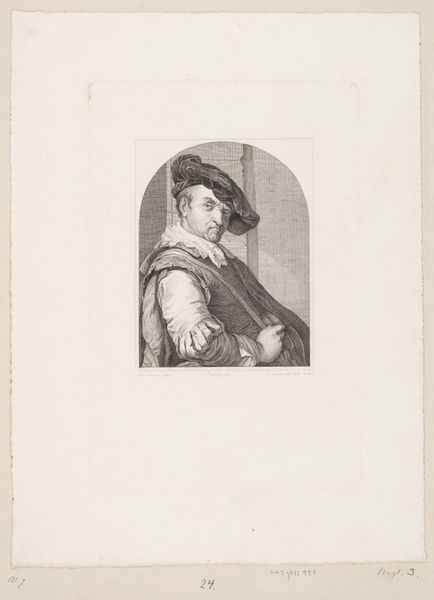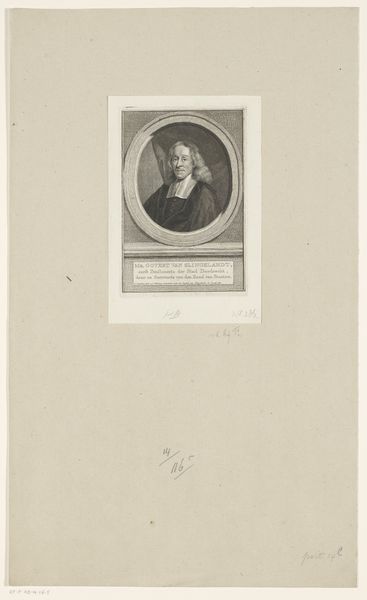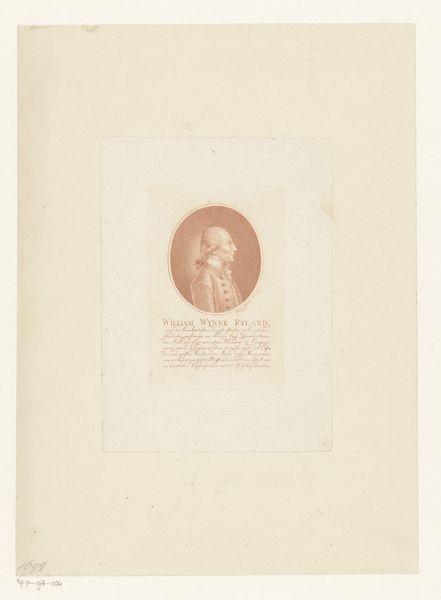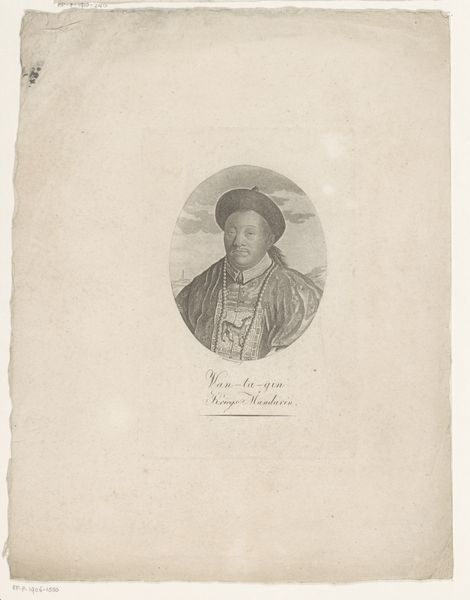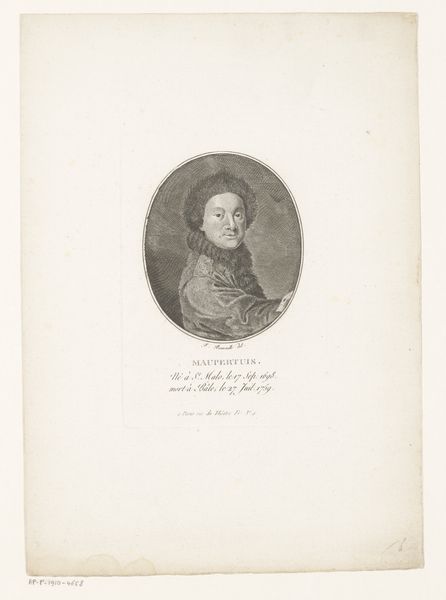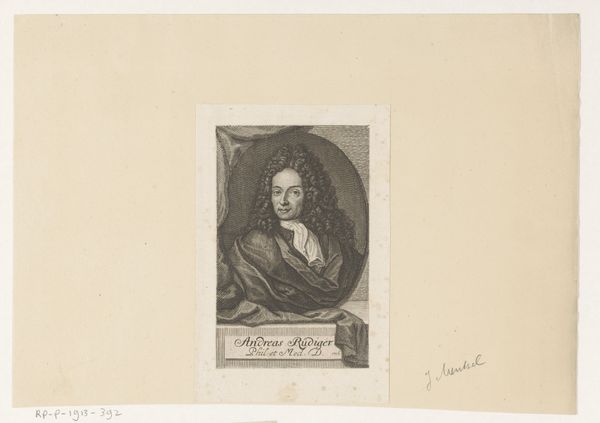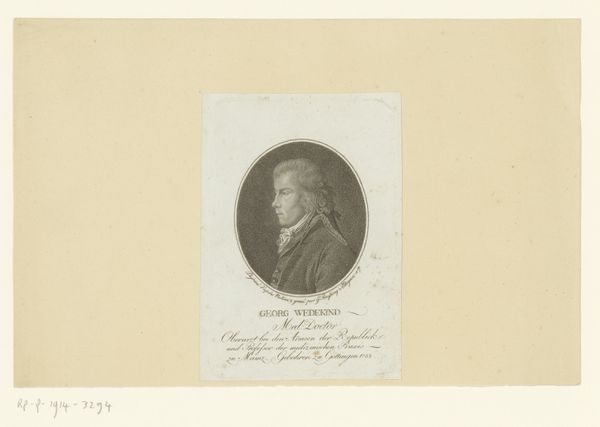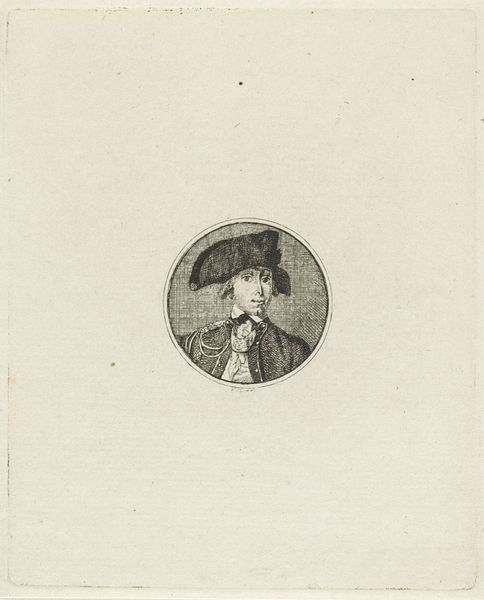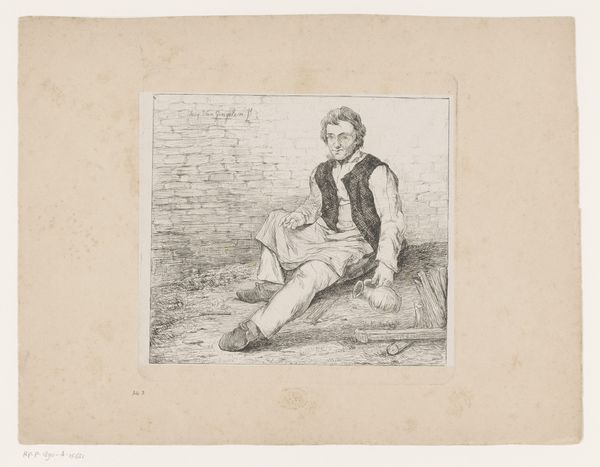
drawing, print, paper, ink, engraving
#
portrait
#
drawing
#
ink paper printed
# print
#
pencil sketch
#
paper
#
ink
#
history-painting
#
academic-art
#
engraving
Dimensions: height 180 mm, width 125 mm, height 250 mm, width 382 mm
Copyright: Rijks Museum: Open Domain
Curator: Welcome. Today we'll be discussing an intriguing print, a portrait of Roemer Visscher dating circa 1827-1828. The piece is made with ink, probably an engraving, on paper. Editor: It strikes me as… contained. There's a strong sense of formality, almost severity, in the subject's gaze and posture. The monochromatic palette certainly contributes to that feeling. Curator: Notice how the artist uses delicate lines to define Visscher's face, really capturing texture in his beard and the details in his clothing. It is these meticulous engravings that demonstrate the artistry behind the print. We can see a sort of structural integrity within that confined, contained space. Editor: But the formality also speaks to something else. The figure's clothes place him at a remove from ordinary existence, they present an exclusive form of labor that could be said to promote social disparities. Curator: You make a salient point. I do agree with the notion that Visscher is intentionally dressed in ways that might present this picture, an engraving of his being, to stand for, well, something permanent. Yet this effect only underscores how well this artist has represented depth. Editor: And maybe, this meticulous detail served a function – the idealization of specific subjects. What message was such an act conveying to those excluded from such visual honor? Curator: That could certainly be an interpretation given that such an exacting method could have, as you note, limited access and complicated production processes which excluded, specifically, on economic terms. Let’s consider too, the inscription on the page. I wonder, what sort of knowledge are these calligraphic lines demanding of their viewer? Editor: In this case, probably a very particular history. Still, let's not get too distracted by its stylistic flourishes. As we consider that this is, again, a social construction, we are considering the artwork from many angles at once. It is so necessary, no? Curator: Absolutely, it makes the viewing so rich. It causes us to look at not only the subject in the artwork but ourselves within the processes of how this piece, or any artwork really, comes to bear meaning. Editor: Yes, so it makes us think. It might very well encourage other people to delve a bit deeper in this work of art, and hopefully consider this person in their own social worlds. Curator: Well said.
Comments
No comments
Be the first to comment and join the conversation on the ultimate creative platform.
